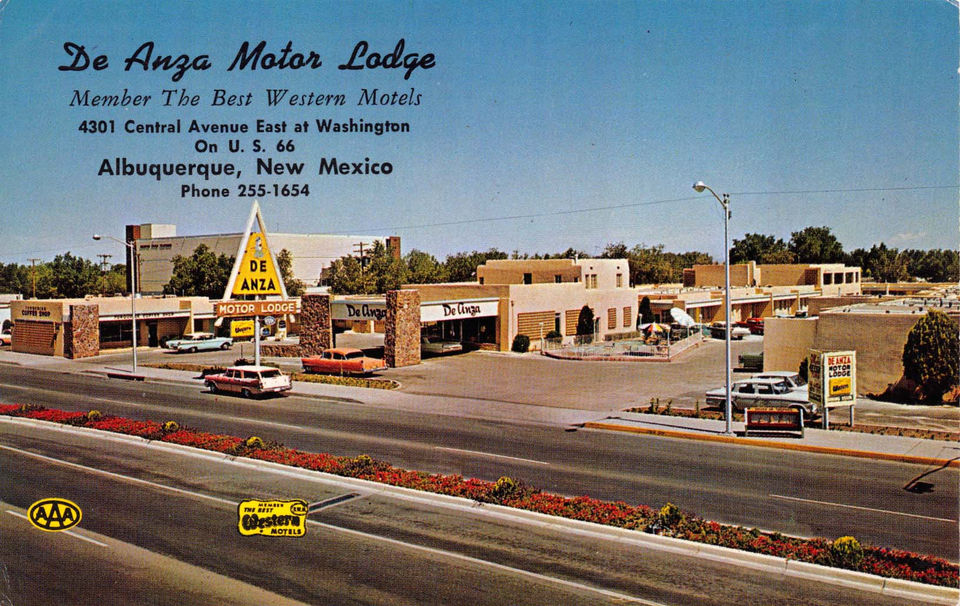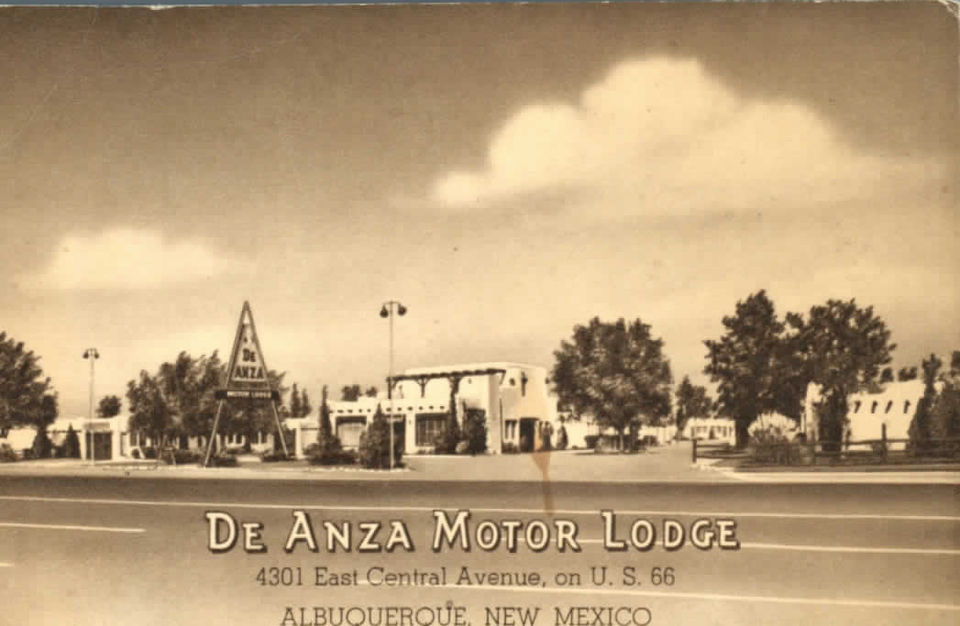
De Anza Apartments
De Anza History


History of the De Anza
The De Anza Motor Lodge was built in 1939 by CG Wallace and served as lodging and trading post for travelers along the famous Route 66. The most extraordinary feature of this property is the sacred Zuni Shalako Ceremonial Procession Murals located in the basement of the Community Amenity Building. Hand painted in the 1950’s by Anthony “Tony” Edaakie, Sr. of the Zuni Pueblo, the Murals are a unique cultural patrimony of Route 66 and the residents of Albuquerque.
These Murals provide an added mystique to the property and are such an important cultural resource that The Route 66 De Anza Association (“Association”), a local non-profit is dedicated to the ongoing protection, preservation of the Murals. Part of their mission to educate the public about the De Anza and will offer limited public viewings of the Murals several times a year.
For more information on the Murals and the cultural and historical significance of The De Anza Motor Lodge visit www.RT66DeAnza.org.
The Route 66 De Anza Association preserves, collects, exhibits and interprets historical information, cultural artifacts, art and craft memorabilia and oral histories that concentrate on the unique cultural experiences of Route 66 in New Mexico. The Association also identifies resources, conducts research, provides documentation and hosts educational presentations for the general public regarding the history of Route 66 including the unique relationship between Albuquerque’s De Anza Motor Lodge and the Zuni Pueblo.
The Association is dedicated to the preservation of the historical and cultural significance of the De Anza Motor Lodge located on Central & Washington Avenues on historic Route 66 (1936–1968 alignment). The De Anza was a major economic, social and political center in Albuquerque from 1939 to 1983.
When Route 66 received federal designation and was rerouted through Albuquerque, it became a main economic driver impacting all of Central New Mexico’s diverse populations including Native Americans. The history and ties to Native Americans are important to understand the De Anza’s unique status as an historic property.













